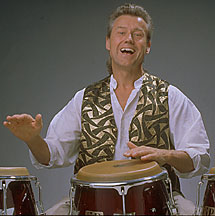"A good drummer listens as much as he plays." ~ Indian Proverb
Percussion Store Drummers Drum Lessons Drumming FAQs
International Shipping
"A good drummer listens as much as he plays." ~ Indian Proverb
Percussion Store Drummers Drum Lessons Drumming FAQs
International Shipping
![]()
![]()
Drums & Percussion
Drum Sets & Cymbals
Cymbals, Hardware & Accessories
Latin Percussion
LP Hardware, Accessories & Replacement Parts
Middle-East Drums & Percussion
African Drums & Accessories
Chinese & Eastern Drums & Percussion
Irish Drums & Percussion
Orchestra Bells & Chimes
Drum & Percussion Hardware
![]()

In this lesson I will present ways to add Open Tones and Slaps within the Heel-Tip pattern. I recommend working with an experienced player/teacher to learn the basics of how to make these sounds. It is important to note, though, that there are many variations of how to make effective Tones and Slaps depending on the player, the music and the context. We should start with one method and stay with it long enough to get comfortable with it. As we progress over time we will become more versatile musicians by being able to play a several different variations of each sound by learning from different conga players.
Heel-tips are one of the fundamental building blocks of playing congas and are used both as basic parts of many rhythms and as jumping off points for improvising on our parts. They are similar in this respect to snare drum rudiments for the drum set player or scales for a melodic instrumentalist. Working with an accomplished teacher to learn the basis of heel-tips early in our conga playing will save having to unlearn bad habits later.
The exercises here are helpful for warming up before practice sessions and gigs. They can be done on a conga, on a table top, our laps or anywhere else if we don't have a drum available or we can't make a lot of sound. Like any fundamental instrumental exercise the goal is not simply to play them as fast as possible as soon as possible, but to play them well at any tempo and with any style of music. Take the time to build good habits into our playing:
The goal here is to build the muscle and nerve memories, and our confidence in our ability to execute them, so that we can call upon these patterns effortlessly and intuitively without hesitation. It takes time (15 minutes or more at first) to get into this groove state.
Each of these exercises has two hand patterns; the first is for right handed players, the second is for lefties. After becoming comfortable leading with your dominant hand practice them leading with the other to improve ambidexterity and independence. For advance study combine different exercises, as well as leading with alternate hands, into patterns of two bars or more to create an almost limitless variety of more advanced melodic exercises and patterns.
LP Music - Conga Warmups Part 2




![]()